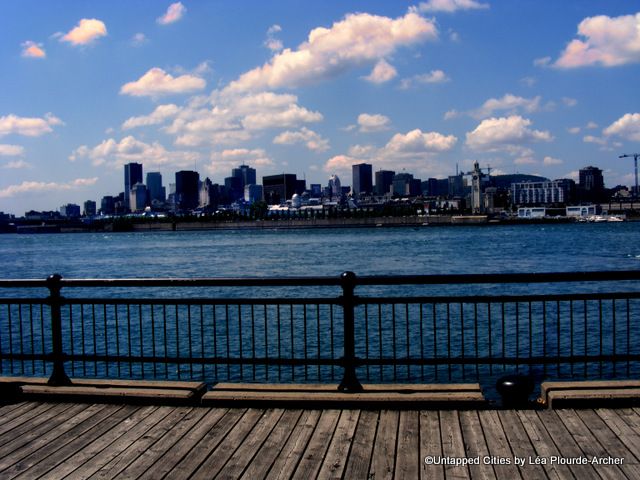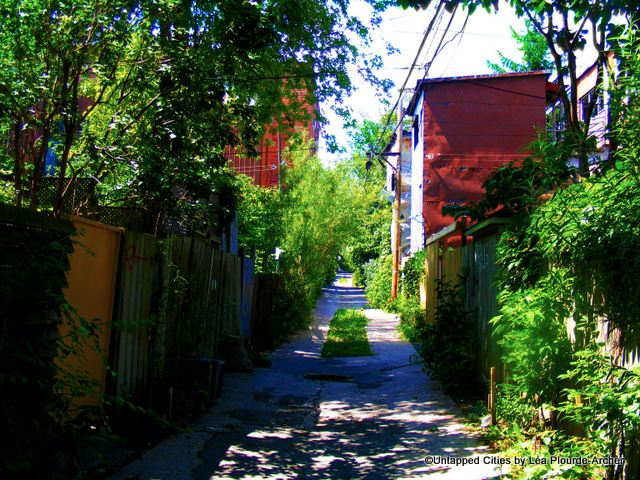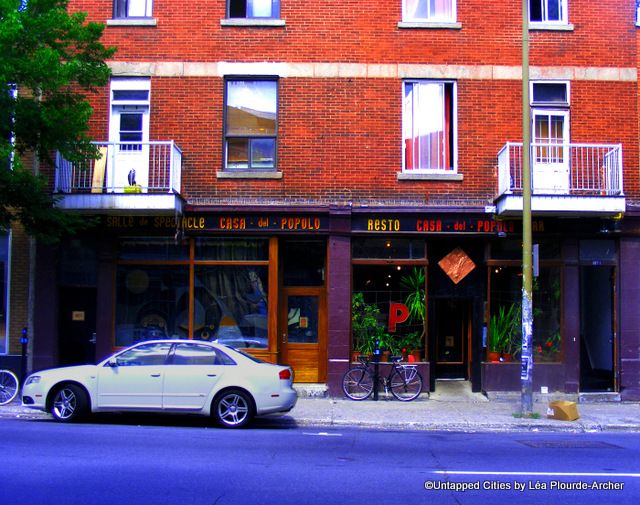Vintage 1970s Photos Show Lost Sites of NYC's Lower East Side
A quest to find his grandmother's birthplace led Richard Marc Sakols on a mission to capture his changing neighborhood on film.


With two thirds of its population being francophone, Montreal, Canada, is the second largest francophone city in the world after Paris (counting the number of native-language speakers). Quiet and colorful neighborhoods mix along with boxy skyscrapers, numerous bike paths and busy highways in city that is big and bustling but remains human scaled.
 Montreal’s skyline as seen from àÆ’à… ½le Sainte-Hélà ¨ne, in the Saint-Lawrence river.
Montreal’s skyline as seen from àÆ’à… ½le Sainte-Hélà ¨ne, in the Saint-Lawrence river.
The geography of Montreal’s setting has done a lot to form its shape: located on an island in the Saint-Lawrence river, Montreal’s bridges and port are all-important in its economy and urban planning. The city is also shaped around a mountain, the Mont-Royal. Since it is such an emblematic feature of the city, a local law states that all buildings have to respect a certain height limitation so the mountain remains visible within the skyline.
Since its foundation in 1642, the city has progressed from leading center in the fur trade to major cultural hub. The 1967 World Fair and the 1976 Summer Olympics are two important events in its history that are often cited as major factors in making Montreal a city of international notoriety. Today, the city is known for its many festivals, vibrant music scene, edgy art galleries and excellent restaurants.
 Architect Richard Buckminster Fuller designed the US pavillon at the ’67 World Fair, in the shape of a geodesic dome. Today it houses a museum dedicated to the environment.
Architect Richard Buckminster Fuller designed the US pavillon at the ’67 World Fair, in the shape of a geodesic dome. Today it houses a museum dedicated to the environment.
The Plateau Mont-Royal is one of the liveliest neighborhoods in the city. It has been dubbed as the “most creative district” in all of Canada. Here, on the eastern side of the mountain, lives the country’s largest concentration of people making a living as artists. Like many trendy spots around the world, the Plateau started out as a working class district that attracted artistic types due to its low rents and bedraggled but (potentially) beautiful buildings. Gentrification first became noticeable in the 1980s, and by the next decade, the Plateau was being designated as a trendy neighborhood in local and international media. While other hip areas in Montreal are starting to emerge, the Plateau is still very effervescent and provides many interesting elements to discover.
 Street art on the Plateau Mont-Royal.
Street art on the Plateau Mont-Royal.
Though the three main streets (Saint-Laurent, Saint-Denis, Mont-Royal) are very animated and fun, the true soul of the Plateau is revealed it its quieter corners. Here, one can observe the sheer creativity of the people that have transformed the buildings they live in. Murals, sculptures and other works of art are a very common sight. Plenty of secret passages and peaceful tree-lined alleyways are waiting to be discovered.
 A typical green alleyway in the Plateau.
A typical green alleyway in the Plateau.
Chef, writer and TV personality Anthony Bourdain once called Montreal’s restaurant scene “Uniquely crazy” and many of the great food spots which evoked this verdict are located in the Plateau. Perhaps the most ubiquitous is bistro Au pied de Cochon, where Hugue Dufour (of M. Wells fame) first honed his skills while preparing traditional local fare with a creative twist, like pig’s head or foie gras poutine, alongside rockstar chef Martin Picard.
 Casa del Popolo on Saint-Laurent Boulevard.
Casa del Popolo on Saint-Laurent Boulevard.
Music is also omnipresent, with numerous concerts being played every night at intimate venues all around the neighborhood. Perhaps most interesting are la Sala Rossa and Casa del Popolo. Owned by the same people, both are restaurants by day (respectively serving tapas and vegetarian fare), and concert halls by night. The list of artists that have played here is diverse but mostly indie, ranging from obscure to well-known (Animal Collective, Arcade Fire, Thurston Moore, Sharon Jones and the Dap Kings).
The Plateau is also widely regarded for its green attitude. It is a neighborhood best visited either on foot or by bicycle. Streets are lined with pleasantly separate bike lanes and beautiful parks are never more than a few blocks away. The quintessential ones are the Parc Lafontaine, Parc Laurier and Parc Jeanne-Mance. Here, on any given (non-winter) day, you’ll be able to witness the laid-back lifestyle that people tend to adopt when residing in this area.
 Sunday afternoon at Parc Laurier.
Sunday afternoon at Parc Laurier.
Where other large Canadian cities like Toronto and Calgary are seen as being serious and business oriented, Montreal is often described as the rebellious, fun child in the family. Is it because of our stubbornness in protecting our language? Our Latin heritage? Or our liberal attitude? No one knows for sure, but stay tuned for our Untapped Cities exploration of other interesting spots in Montreal and we may begin to find an answer.
Subscribe to our newsletter